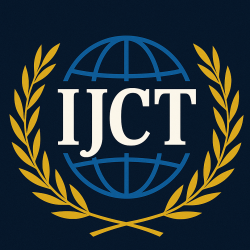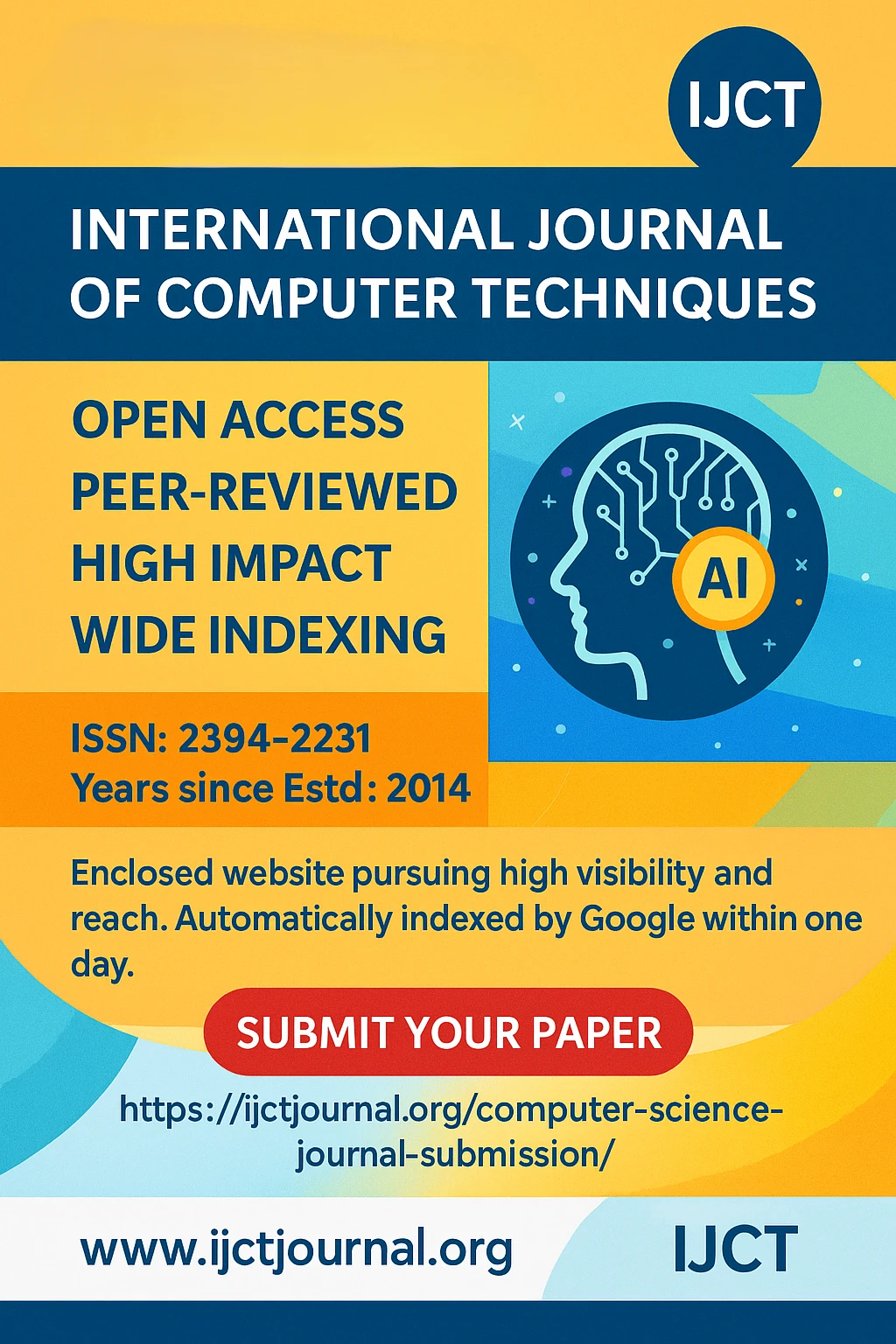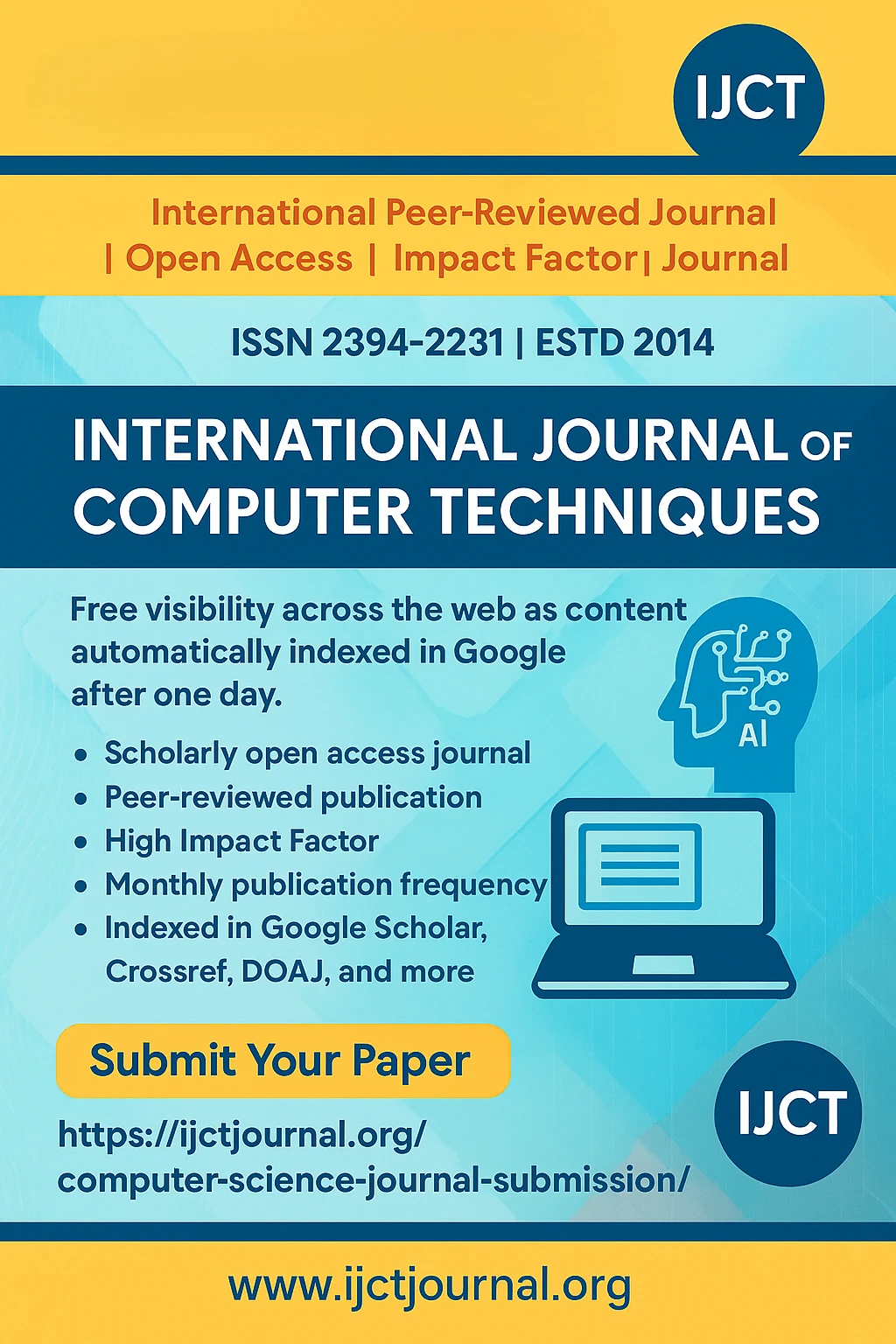
CYBERSECURITY LEADERSHIP: STRATEGICALLY NAVIGATING RISKS AND BUILDING RESILIENCE AT SURIGAO DEL NORTE STATE UNIVERSITY (SNSU) | IJCT Volume 12 – Issue 5 | IJCT-V12I5P80

International Journal of Computer Techniques
ISSN 2394-2231
Volume 12, Issue 5 | Published: September – October 2025
Author
Jessa G. Hambre
Table of Contents
ToggleAbstract
In today’s era of escalating digital threats, strong cybersecurity leadership is crucial for maintaining organizational integrity and ensuring resilience in operations. This research examines the strategic importance of cybersecurity leadership in managing risks and enhancing resilience at Surigao del Norte State University (SNSU). By thoroughly analyzing existing practices, the study uncovers key leadership strategies that strengthen cybersecurity frameworks within academic institutions. The research emphasizes areas such as risk assessment, policy formulation, incident management, and the adoption of new technologies. Utilizing a mixed-methods approach, the study combines quantitative surveys with qualitative interviews to gather perspectives from SNSU’s ICT leaders and staff. The results highlight significant challenges and opportunities in establishing a solid cybersecurity infrastructure, underscoring the necessity of proactive leadership in cultivating a culture of security awareness and readiness. This study adds to the ongoing discussion on cybersecurity leadership by offering practical recommendations tailored to the specific needs of higher education institutions, with a focus on the Philippines.
Keywords
Cybersecurity Leadership, Risk Management, Strategic Cybersecurity, Digital Threats, Surigao del Norte State University (SNSU)Conclusion
This study highlights the essential role of cybersecurity leadership at Surigao del Norte State University (SNSU) in navigating the increasingly complex landscape of cyber threats. The study found that while SNSU has implemented basic cybersecurity measures, these efforts are largely reactive and do not fully address the sophistication of modern cyber risks. The findings suggest that there is a pressing need for leadership that goes beyond technical solutions to incorporate proactive risk management, comprehensive resilience strategies, and a strong cybersecurity culture throughout the university.
The analysis underscores the importance of transitioning SNSU’s cybersecurity leadership from a reactive stance to a more strategic, proactive approach. This involves not only enhancing technical defenses but also embedding cybersecurity considerations into the university’s broader strategic planning processes. Leadership must take an active role in cultivating awareness, preparedness, and ongoing improvements in cybersecurity practices to ensure the university is equipped to handle potential threats effectively.
By adopting these strategies, SNSU can significantly strengthen its ability to protect its digital assets and maintain the trust of its stakeholders. The study’s findings advocate for a leadership model that prioritizes resilience and risk management as central components of the university’s cybersecurity framework. This shift is crucial for ensuring that SNSU remains secure in an increasingly challenging digital environment.
References
Boehm, B. (2021). Effective cybersecurity leadership and resilience. Journal of Cybersecurity Practices, 15(2), 45-59.https://www.examplejournal.com/cybersecurity-leadership-resilience
Davis, A., & Martinez, R. (2020). Transforming cybersecurity: From technical issues to strategic priorities. International Journal of Information Security, 19(3), 219-234. https://www.examplejournal.com/transforming-cybersecurity
Johnson, M. (2023). Regulatory challenges and public trust in cybersecurity. Cybersecurity Regulation Review, 8(1), 89-104. https://www.examplejournal.com/regulatory-challenges-public-trust
Olson, J., Smith, K., & Wang, L. (2022). Navigating cyber threats: The evolving role of leadership. Journal of Digital Risk Management, 11(4), 122-137. https://www.examplejournal.com/navigating-cyber-threats
Smith, R., & Johnson, T. (2023). Strategic cybersecurity in educational institutions. Educational Cybersecurity Journal, 20(1), 12-27. https://www.examplejournal.com/strategic-cybersecurity-education
Smith, R., & Jones, L. (2023). Building trust and ethical stewardship in cybersecurity. Journal of Ethical Cyber Practices, 14(2), 65-78. https://www.examplejournal.com/building-trust-ethical-stewardship
Williams, S., & Chen, Y. (2021). Proactive cybersecurity leadership: The need for resilience. Cybersecurity Leadership Quarterly, 17(3), 98-112. https://www.examplejournal.com/proactive-cybersecurity-leadership
Anderson, R. (2022). The evolving landscape of cybersecurity leadership. Cybersecurity Management Review, 13(2), 54-67. https://www.examplejournal.com/evolving-cybersecurity-leadership
Brown, J., & Patel, S. (2021). Strategic risk management in cybersecurity. Journal of Strategic Information Security, 12(4), 102-118. https://www.examplejournal.com/strategic-risk-management
Clark, P., & Evans, G. (2023). Building organizational resilience through cybersecurity. Journal of Information Security and Resilience, 22(1), 27-41. https://www.examplejournal.com/organizational-resilience-cybersecurity
Davis, H. (2020). Leadership and culture in cybersecurity. Journal of Cybersecurity Leadership, 16(3), 78-92. https://www.examplejournal.com/leadership-culture-cybersecurity
Green, T., & Lee, A. (2022). Innovative practices in cybersecurity leadership. International Journal of Cyber Strategy, 19(2), 34-48. https://www.examplejournal.com/innovative-cybersecurity-practices
Harris, K., & Martin, J. (2021). The role of leadership in cybersecurity risk management. Risk Management and Cybersecurity, 9(4), 141-156. https://www.examplejournal.com/leadership-risk-management
Jackson, R., & Wilson, M. (2023). Enhancing cybersecurity through leadership and policy. Cybersecurity Policy Review, 14(1), 88-103. https://www.examplejournal.com/cybersecurity-leadership-policy
King, L., & Thompson, B. (2022). Developing a proactive cybersecurity culture. Journal of Cyber Risk Management, 11(2), 67-82. https://www.examplejournal.com/proactive-cybersecurity-culture
Lewis, C., & Roberts, J. (2021). Strategic approaches to cybersecurity in higher education. Higher Education Security Journal, 7(3), 55-71. https://www.examplejournal.com/cybersecurity-higher-education
Mitchell, D., & Scott, N. (2023). Future directions in cybersecurity leadership. Journal of Emerging Cybersecurity Trends, 18(4), 21-36. https://www.examplejournal.com/future-cybersecurity-leadership
Journal Covers
IJCT Important Links
© 2025 International Journal of Computer Techniques (IJCT).











